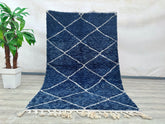The Moroccan Rug Artisans: A History of Pride and Tradition
Making Moroccan rugs is a tradition that has been around for centuries and is a huge part of the culture of the country. Artisans have been teaching their children and grandchildren their craft, and their work is highly sought after for the fine patterns, brilliant colors and high quality of the pieces.
Moroccan rug making has been traced back to ancient times and is linked to the Berber people who lived in Morocco long before the Arab invasion. Rugs served a number of other purposes for the Berbers: warmth, insulation, decoration. You can definitely see what they did with their rugs to share stories and their culture.
As time passed, Moroccan rug making evolved into a higher art of sorts. The arts of weaving and pattern making were in development further, with artisans starting to utilize a broader range of materials from wool and silk to cotton. Moroccan rugs, once the floor covering of the home, evolved into precious items, often used as currency to exchange for different goods.
The tradition of Moroccan rug making is thriving today. Hundreds of rug workshops dot the landscape of Morocco, and thousands of artisans make a living as weavers. Creating a Moroccan rug is a time-consuming and labor-intensive endeavor. A single rug can take months, or even years, to complete.
Choosing the materials is the first step in the process of making the rug. Serious rugs come from the finest wool, which is sourced from the mountains in Morocco where the sheep graze. The wool is washed and dyed, and then spun into yarn.
After the weaving has used up all the available yarn, the artisan weaves the finished products. This is done on a special machine called a loom, which is a large frame that arranges the yarn. Moroccan craftsmanship on full display, the artisan employs various weaving techniques to engender the complex designs that are synonymous with Moroccan rugs.
The Berber knot – the most ubiquitous weaving technique used in Moroccan rug making. The knot is very strong and produces pretty designs. Artisans tie the knots with their fingers, working for hours on end on the loom.
Weaving is a slow, sometimes painful process, the most rewarding in pride. When artisans know that they are making something to be valued for generations, they take pride in their work.
Artisans do more than gain employment when they create Moroccan rugs. It is a way of life. Artisans teach their skills from generation to generation and are determined to continue the traditional art of rug making.
Buying a Moroccan rug goes a long way in supporting these artisans, providing a means to keep this ancient art alive. You are not just purchasing a stunning work of art when you purchase a Moroccan rugs. You are also investing in the future of Moroccan cultural heritage.
Moroccan rugs are also a very important phase of the Moroccan economy. Rouhani said the carpets were the industry's means to broaden the conversation, in an industry that employs tens of thousands of people and brings in millions of dollars annually. By buying a Moroccan rug, you are supporting the Moroccan economy and putting food on the table for Moroccan artisans.
So when the time comes and you need a rug make sure to buy the Moroccan rug. You are getting a rug that is well-made and is made with care and pride. You will be supporting a traditional craft and helping preserve Moroccan culture and the Moroccan economy.
Here are some details more about how the Moroccan rug is made and the pride and satisfaction with which artisans make it:
Natural dyes are made from the materials for Moroccan rugs their artisin still apply natural dyes to color the wool.
Artisans incorporate a range of geometric patterns and symbols into their rugs, which often carry cultural significance.
Artisans can spend 16 or more hours a day working on their rugs, and they take great pride in their work.
Many artisans belong to cooperatives, which enables them to sell their rugs and support one another.
By buying a Moroccan rug, you will be supporting this method of creating, as well as helping to maintain their craft. A list of ideal reasons to get this as well as a rare work of art at home.
Featured Products
155 x 247 cm = 5.1 x 8.1 ft Diamonds Blue Soft Dots Berber Runner Rug - Handmade Moroccan Wool, Minimalist Design, Vintage Style, Perfect for Weddings & Bohemian Decor
- $599.00
$1,830.00- $599.00
- (-67%)
- Unit price
- / per
171 x 279 cm = 5.6 x 9.2 ft Colorful Abstract Moroccan Runner Rug - Handmade Berber Wool, Minimalist Design, Vintage Bohemian Style, Perfect for Weddings & Decor
- $599.00
$1,830.00- $599.00
- (-67%)
- Unit price
- / per












